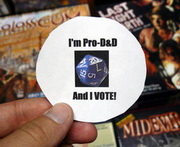Over at Legal Pad, there is a posting about the another view of the Brayton mess in Ohio that I have mentioned earlier. Ninth Circuit Court of Appeal Judge, and former San Francisco Superior Court judge (where the vast majority of Brayton Purcell's cases are venued), Carlos Bea offered this analysis of what went on Ohio. He is quoted as saying, “Far from being unprofessional conduct, it would be malpractice for an attorney not to file claims against defendants who constituted possible sources of asbestos ingestion by the stricken plaintiff, rather than merely shoot for one.”
Judge Bea was also quoted as saying, "“that’s a pretty good indication whatever [Andreas] did may have miffed the judge, but he didn’t miff the opposing attorneys enough that would get them to ask for dollars.”
Now, I'm not against a plaintiff's attorney trying to maximize a wronged person's recovery from the criminal corporations which poisoned them. (And let's be honest, after the tobacco industry, the asbestos industry was probably the worst, to a certain level.) But how does Judge Bea get around the finding that Andreas instructed his experts to perform destructive testing after telling the court he had never done such a thing? Or that he had lied to the court about submitting certain documents? Or that they obstructed the discovery process? Maximizing the recovery is one thing... the rest... I'm not sure about. Then again, perhaps Judge Bea could have a defense for it.
Odds & Ends: December 5, 2025
11 hours ago





No comments:
Post a Comment